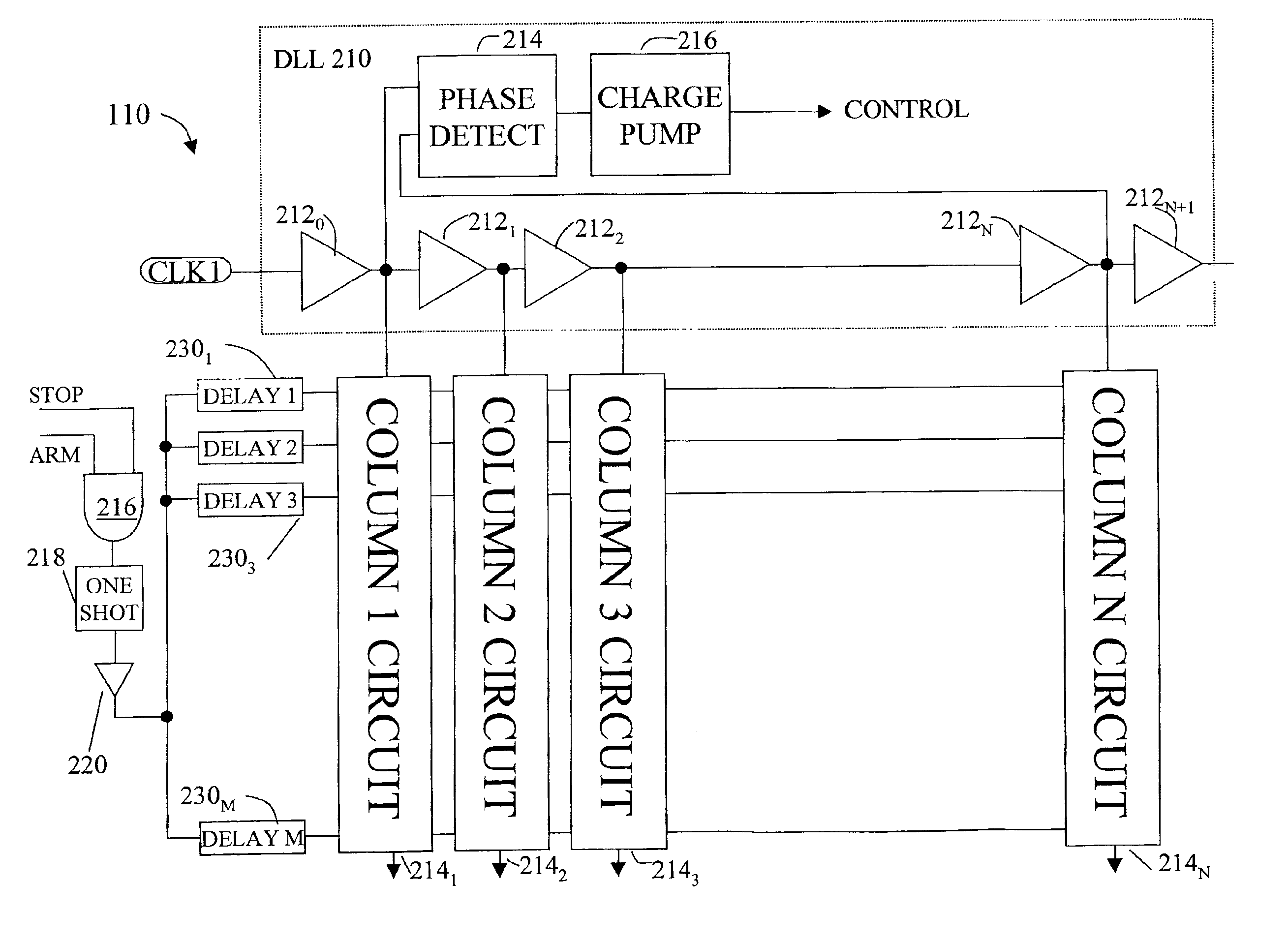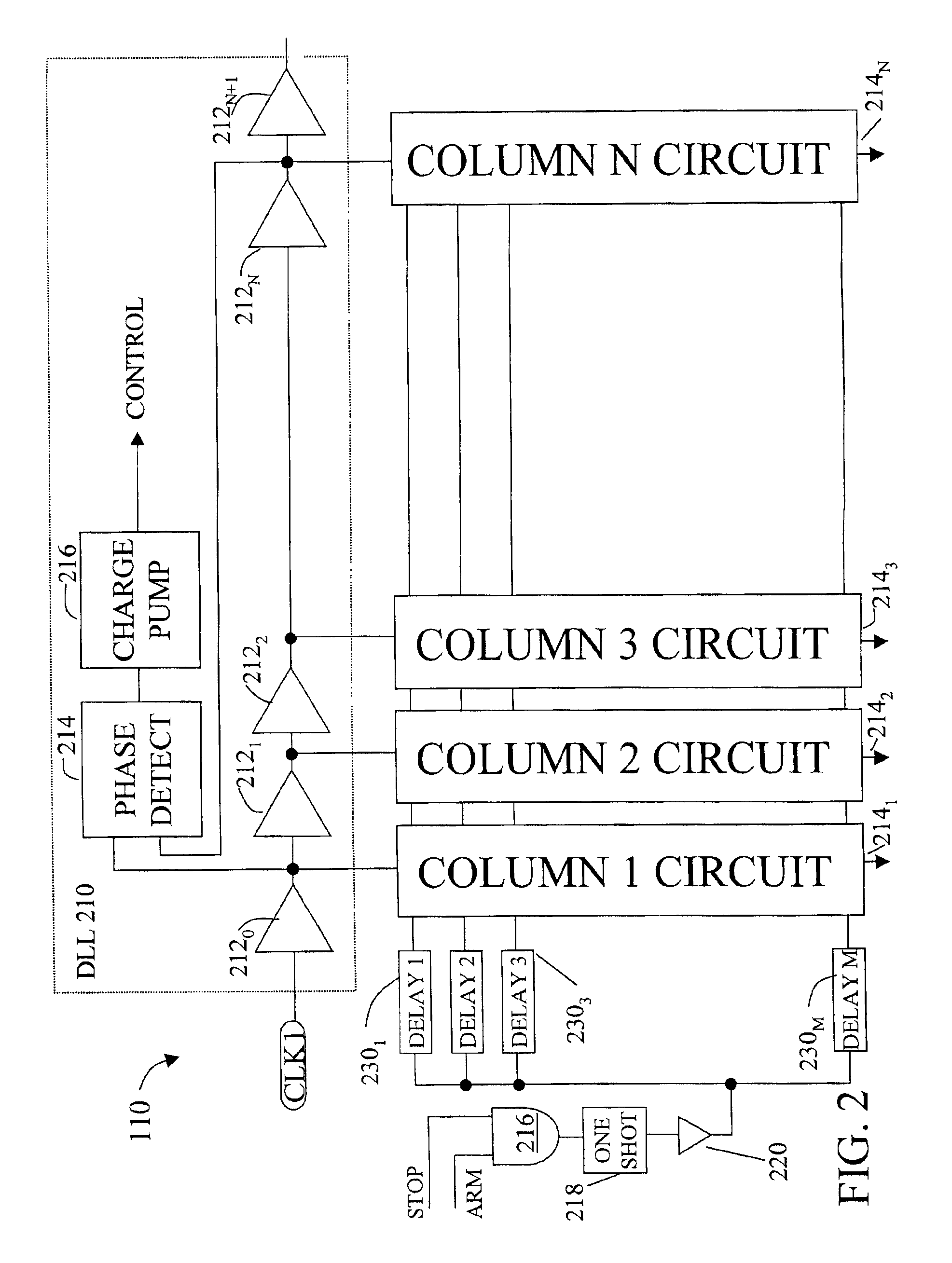Compact ATE with time stamp system
a time stamp and compact technology, applied in the field of automatic test equipment, can solve the problems of limited resolution, inadequacy, and inability to distinguish, and achieve the effect of low cos
- Summary
- Abstract
- Description
- Claims
- Application Information
AI Technical Summary
Benefits of technology
Problems solved by technology
Method used
Image
Examples
Embodiment Construction
FIG. 1 shows a time stamp system incorporating the invention. A START and STOP signal are applied to the system and the system produces a digital OUTPUT that reflects the elapsed time between the START and STOP signals. In the illustrated embodiment, the START signal is synchronized to the CLK2 signal, which is a digital clock.
Upon activation of the START signal, counter 112 begins to count pulses of CLK2. By way of illustration, CLK2 could be a 400 MHz clock, such that each pulse represents the passage of 2.5 nsec. The most significant bits of the OUTPUT signal are derived from the output of counter 112. For a 400 MHz clock, the upper bits represent a time that is the value in the counter multiplied by 2.5 nsec.
The lower order bits of the OUTPUT signal represent some fraction of the period of CLK1, also a digital clock signal. The lower order bits are generated by Time to Digital Converter 110, encoder 118 and RAM 120, as will be described in greater detail below. In this way, the ...
PUM
 Login to View More
Login to View More Abstract
Description
Claims
Application Information
 Login to View More
Login to View More - R&D
- Intellectual Property
- Life Sciences
- Materials
- Tech Scout
- Unparalleled Data Quality
- Higher Quality Content
- 60% Fewer Hallucinations
Browse by: Latest US Patents, China's latest patents, Technical Efficacy Thesaurus, Application Domain, Technology Topic, Popular Technical Reports.
© 2025 PatSnap. All rights reserved.Legal|Privacy policy|Modern Slavery Act Transparency Statement|Sitemap|About US| Contact US: help@patsnap.com



